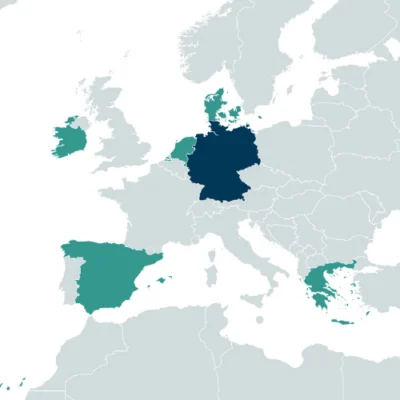BioReStorm – Anticipating Biological Succession in Rehabilitation of Long-Term Operated Nature-Based Solutions for Stormwater Treatment in Different Climate Zones
Call
Duration
01/04/2025 – 31/03/2028
Total grant
approx. 950 thsd. €
More information
Katharina Tondera
Katharina.tondera@entpe.fr
Partners of the project
- Ecology of Natural and Anthropized Hydrosystems Laboratory, Graduate School of Civil, Environmental and Urban Engineering, Vaulx-en-Velin, France
- Ecology of Natural and Anthropized Hydrosystems Laboratory, Villeurbanne, France
- Department of Civil, Environmental and Natural Resources Engineering, Urban Water Engineering, Luleå University of Technology, Luleå, Sweden
- School of Urban Planning and Landscape Architecture and Plant Biology Research Institute, University of Montreal, Montreal, Canada
- UT, Institute of Ecology and Earth Sciences, University of Tartu, Tartu, Estonia

Context
Nature-based solutions (NbS) for stormwater treatment relying on vertical flow such as rain gardens and bioretention filters have been increasingly implemented. Their vegetation plays an important role for hydraulics, aesthetic appearance, and support of biodiversity. However, in the long term, initially planted species are replaced due to competition or too demanding environmental conditions such as extended drought periods. Furthermore, system maintenance is often neglected. The resulting appearance is not always following residents’ aesthetic expectations, leading to complaints. This situation represents a trade-off between the provision of regulatory ecosystem services such as regulation of water cycle and enhancement of biodiversity, and cultural ecosystem services (e.g. aesthetics). Interaction between plants and their microbial communities could enhance tolerance to the harsh conditions, ultimately support their growth and survival, and contribute largely to pollutant degradation and/or fixation.
Main objectives
BioReStorm aims to evaluate (i) the temporal and spatial changes in plants on NbS and associated microbial communities; (ii) the impact of plants and microorganisms on technical challenges concerning hydraulic and treatment processes, and their contribution to local biodiversity. The identification of shortcomings in design, implementation, and maintenance of long-term operated NbS for stormwater treatment will then enable developing adequate rehabilitation concepts for an effective continuous functioning. Rehabilitation also means ensuring a positive public perception of these systems in the long term.
Main activities
BioReStorm will assess in mesocosm trials and at field sites the contribution of microbial communities to a successful plant establishment under the demanding conditions of stormwater NbS in different climatic conditions, as well as biodiversity development and natural succession of plants. In order to enable practical and simplified long-term assessment of hydraulic and treatment functioning, we will develop a checklist, simplified in situ tests and rehabilitation measures in collaboration with relevant stakeholders. We will investigate the perception and values of residents towards long-term operated stormwater NbS and their willingness to contribute to maintenance measures. Furthermore, we will develop an adapted approach for direct knowledge transfer to regions with little experience on using SUDS elements.

